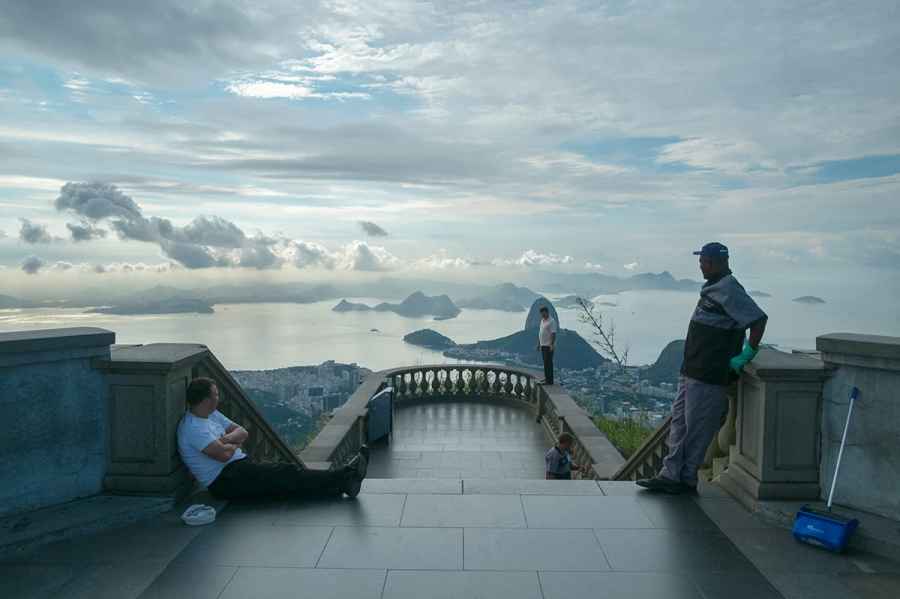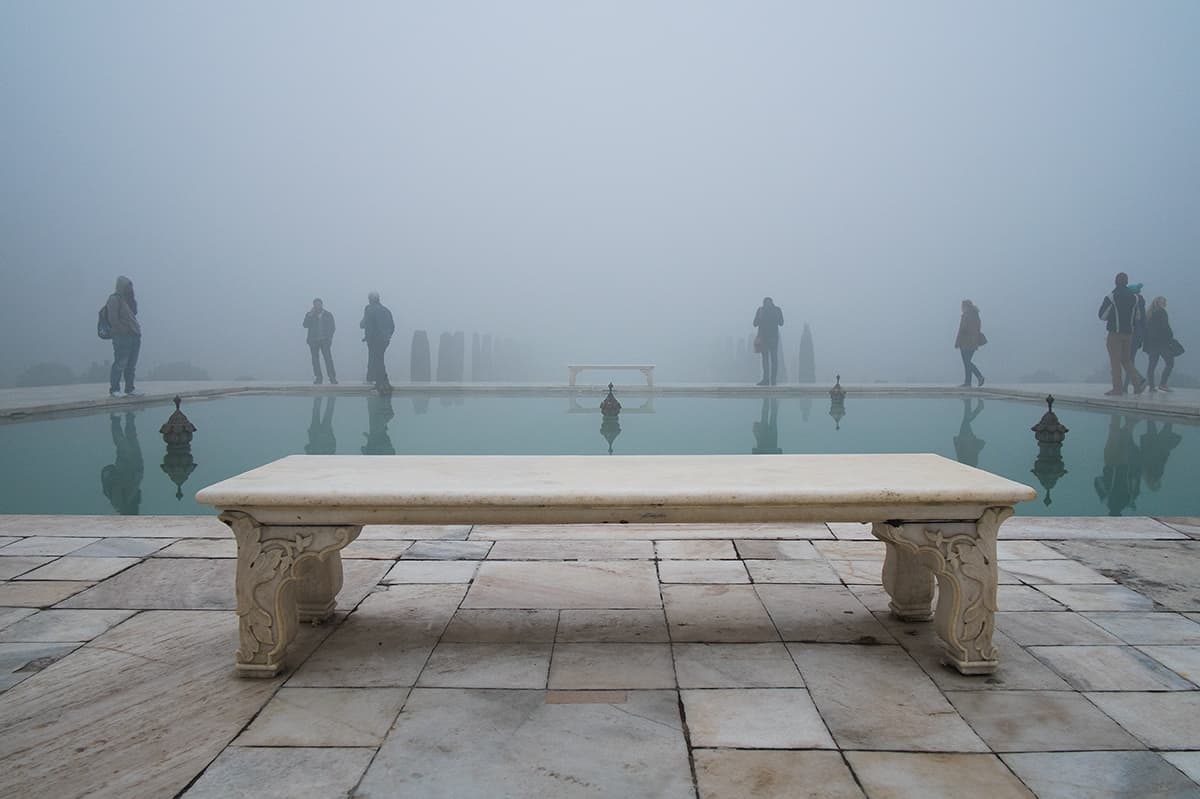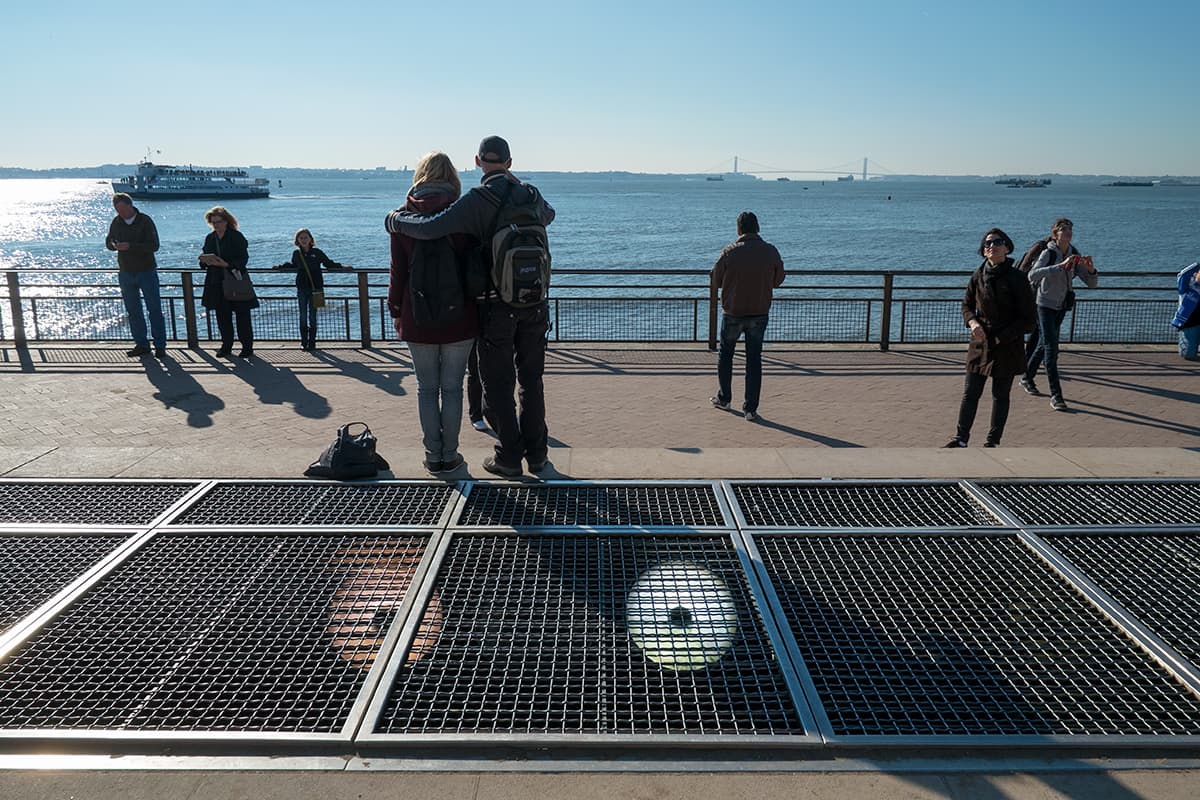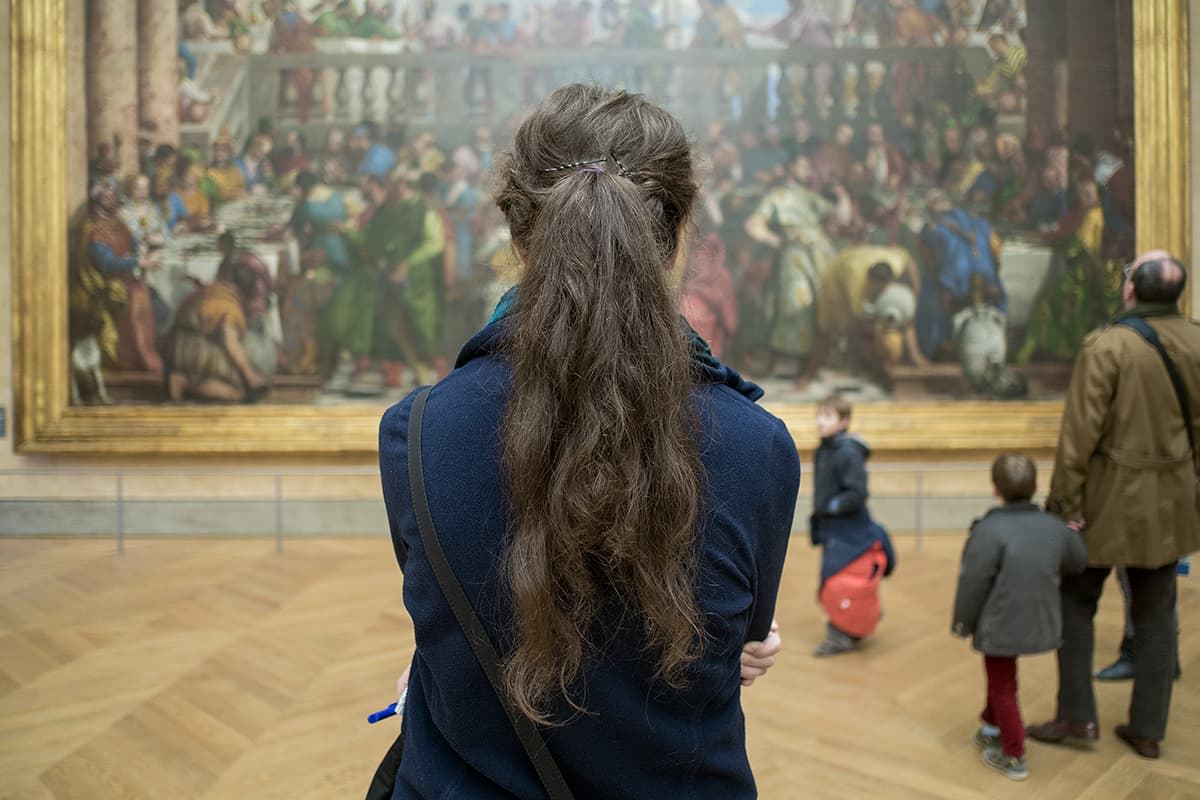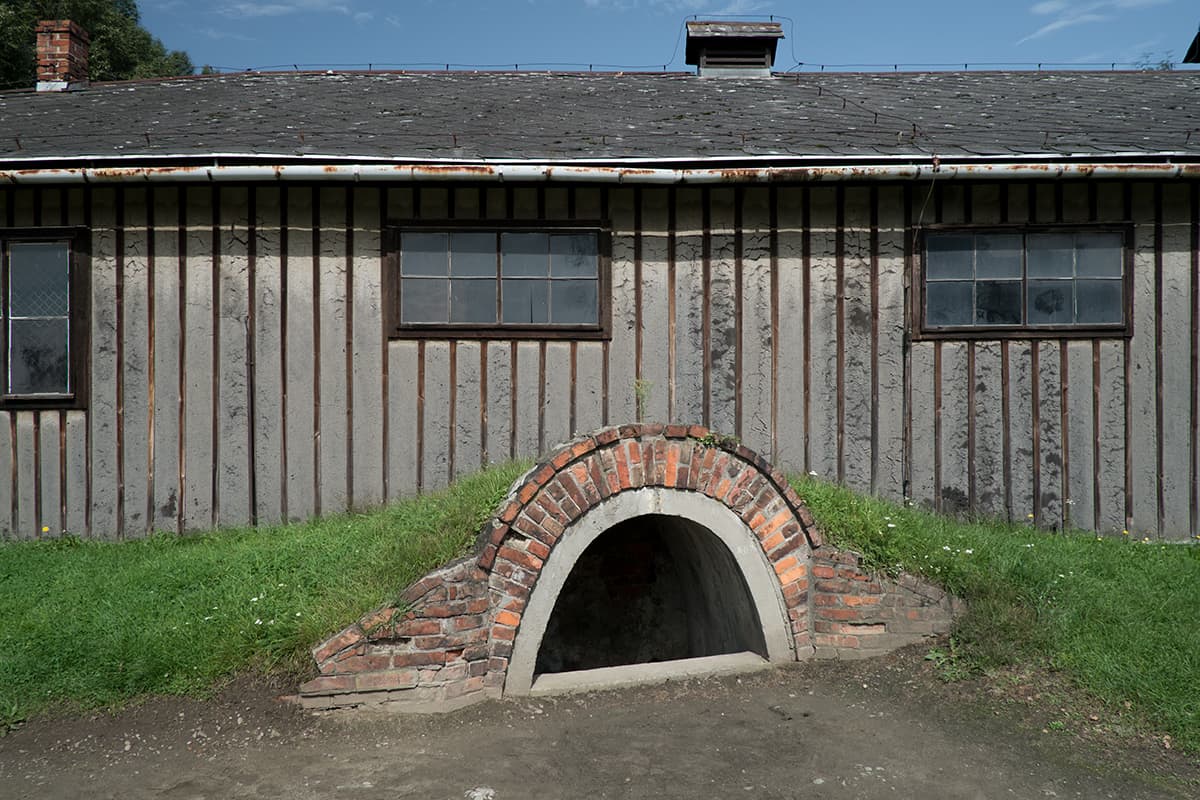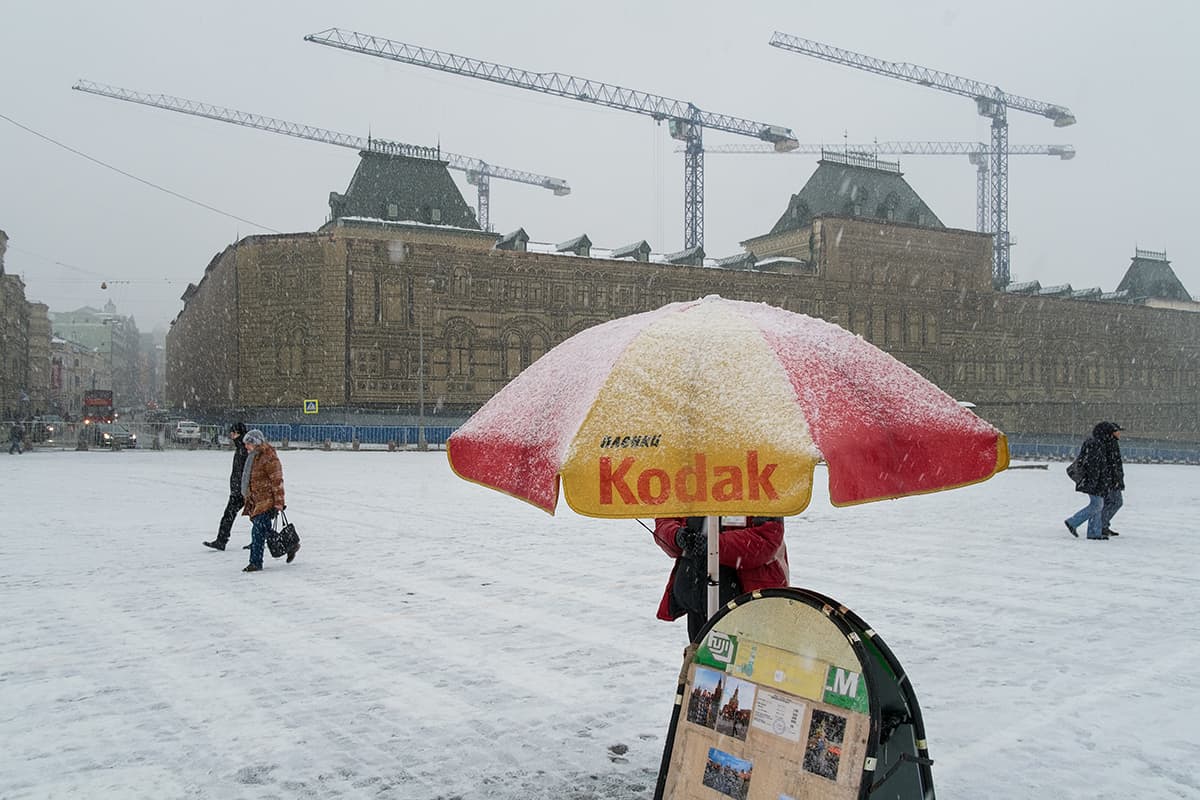Tell us a little about this project. What first piqued your interest in a series like this? Did you have any specific inspirations?
The Volte-face project began in Egypt on a visit to the Pyramids of Giza in 2012. Like many of the great monuments of the world, when you first encounter the Pyramids you feel that you have somehow seen them before, so familiar are they from postcards, posters, television documentaries, etc. I found myself intrigued as much by the surrounding landscape as by the Pyramids themselves. I was particularly struck by the appearance of a brand new golf course, sandwiched between the rubbish-strewn sand of the desert beneath my feet and the smoggy suburbs of Giza in the distance. There was a sense of a landscape ignored, a place that we look from, not at. Having found this image, I went on to do the same at the neighbouring pyramid, Khafre, and then continued the process in as many countries as I could visit over the next four years.
The results certainly make for interesting viewing. What is it you think people can learn from these images?
The idea behind the Volte-face project is to draw our attention to landscapes that are usually ignored. We stand on them, walk over them, drive through them. They are over-looked, in the sense of being neglected and ignored, but also looked-over as we train our sight and our lenses on the famous monument or building that has brought us to this place. The resulting images seem to raise many interesting questions, and by giving the title of the monument to my about-face image, I could draw on the viewers’ knowledge and familiarity with the landmark and all it stands for. My hope is that the project encourages a partial re-directing of our points of focus, to appreciate these places for more than just the classic tourist snap of a place that has been photographed a million times already. That is, to favour the incidental over the monumental.
How did you select your subjects?
I have tried to focus on some of the most familiar and most photographed monuments around the world. It could never be a definitive list, but I’ve done my best! I have also tried to respect regional knowledge and history. La Moneda Palace in Santiago, Chile for instance, may not be universally known but within much of South America its place and importance in recent history is significant. The Crusader castle in Byblos, Lebanon is another case in point. But there are the obvious headline places, such as the Eiffel Tower, Statue of Liberty, Hollywood Sign, etc. Hopefully if the viewer isn’t familiar with a particular monument or site, then I hope they will take the time to discover it.
What did you find the sites – and the resulting images – had in common?
Each location featured in the Volte-face series seems to offer up some form of narrative, theme or connection with the history of a place, so in that sense they stand unique to themselves. But often, despite being many thousands of miles apart and without any obvious historical connection, it was surprising how many places had features in common. Environmental misuse and neglect was often present, unsurprisingly so since these are locations where all the attention is focused on a particularly focal point or totem. But there were other connections too. I was surprised by how often a face could be discerned within the landscape, with architectural features somehow arranged to return my gaze.
Any differences?
As these photographs were taken over a four year period in different climates and conditions, there is quite a range of contrast, saturation and texture. So the series has quite a varied quality to it. But I hope that the continuity of thought process behind the project binds them together.
What equipment did you use and why?
To give a consistency of vision to otherwise quite disparate images I shot with the same camera and lens throughout. This was a handheld rangefinder and wide angle lens. On occasion, I would employ a polarising filter to add clarity and saturation, but otherwise the images are un-manipulated. I always frame in-camera and do not crop later. Printing is kept fairly naturalistic without recourse to strong vignetting, colour correcting or highlighting.
Tell us a little about the final images. How planned were they? Did you look for specific compositions or was it more of an organic, candid-style process?
The most challenging aspect of the process was to set aside any preconceived notions I had about a particular place, so as to be receptive to whatever I may find there on my arrival. I would read up on the history of a monument or site to see how it was regarded by locals as well as tourists, but try not to let that dictate my response to it. I would often spend many hours at one spot waiting for something to reveal itself. In certain locations, I would return the next day and at a different time of day to see what had changed. Some locations, such as Tiananmen Square, proved very fruitful and choosing a single image for the final edit was very difficult. Others were trickier. At the Korean DMZ for instance, I only had time to fire off two shots facing towards the South Korean guard before I was told to stop (you’re only meant to take pictures looking North).
Do you have a favourite shot? Why?
I think one of my favourite images is at Christ the Redeemer in Rio de Janeiro. This one is atypical in that the resulting image is as beautiful, if not more so, than a picture of the monument itself, but my real interest here is how it reveals the monument to be a place of work, or labour. The security staff and janitors are caught enjoying the view, chilling out on a slow morning. They have a lack of awe born of daily exposure. I like the fact that they are the subjects of a photograph taken at a place where millions of other images are taken that normally render them invisible.
Can you tell us a little more about the exhibition?
The first exhibition of Volte-face will take place at the Royal Geographical Society in South Kensington, London between September 19 and October 14 2016. Admission is free and I hope to be there most days, work permitting, and look forward to hearing feedback in person. A book of the project will also be published by Dewi Lewis Publishing to coincide with the exhibition.
What’s your next project?
All I can say about my next project is that it is set in the UK. It will be nice to leave my passport at home for once!
All images © Oliver Curtis
The full Volte-face project will be displayed at the Royal Geographic Society in London from September 19th – October 14th 2016 (admission is free), and the photo-book will be published by Dewi Lewis to coincide with the exhibition. To find out more about Oliver’s work, visit www.olivercurtisphotography.co.uk.

